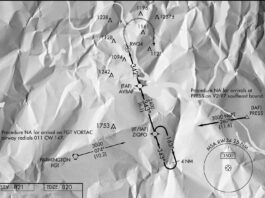Briefing: November 2014
Two general-aviation aircraft designs, the Turbine Mallard and the all-metal tandem SAM LSA, are up for sale. Thierry Zibi said he enjoyed designing and building the SAM, but doesnt want to run a production company. The SAM is certified in Canada as an Advanced Ultralight, and is compliant with the LSA rule in the USA. Frakes Aviation acquired classic Grumman Mallards type certificate some years ago, and upgraded the fleet with turbine engines. The TC is back on the market now, as the current owners are ready to retire. Were looking for someone to take on the entire project, said Sam Jantzen, of Mallard Aircraft, who is working with Frakes. That would include not just the type certificate but the inventory of parts and several partially-built aircraft now owned by Frakes and based in Texas.
Eyes Wide Open
Recently, I witnessed a ground collision between an airliner and a baggage tug. While I tend to be rather stoic in such matters, in retrospect this incident left me surprisingly rattled.As Ive previously mentioned in these pages, by night Im editor of this magazine, but by day I wear the hat of an airline pilot.
Approach Clinic: Not a Real Alternate?
Several months back reader Jim Gibertoni in Alaska forwarded me a letter he wrote to the FAA administrator, Randy Babbit. Heres a line from that letter: My question is simple: How does one FAA Part 91 pilot in Fairbanks, Alaska, get the attention of the FAA before the next crash happens in Fairbanks?
Tips for flying the SFRA
I vividly remember my first VFR flight into the Washington, D.C., Special Flight Rules Area (SFRA, previously the D.C. ADIZ). Arriving into Leesburg, Va., I ducked under the Dulles Class B airspace and entered the downwind behind another aircraft. Thats when I heard the voice: Watch your altitude. I figured Potomac Approach somehow smelled fresh blood and would have a SWAT team greeting me on landing.
Botching the Missed
As an instructor for GLASS Simulator Center in Sugar Grove, Ill., I see a lot of pilots execute missed-approaches. Theyre all instrument-rated and flying the sims for type-specific aircraft training. Most have considerable IFR experience.
Flat-Screen Binoculars
Say what you like about pilots flying around with their heads up their MFDs rather than looking outside the cockpit, but when it comes to spotting traffic more than dozen wing-lengths from the airplane, a glance at traffic display is worth a hundred FAA-approved, 10-degree scans out the window.
Talk to me, baby
Ive come to believe that single-pilot IFR in a fully loaded, glass-cockpit-but without using an autopilot-can be the toughest IFR flying you can do. The past month has found me in the clouds with and without students in a couple different airframes that I hadnt recently flown. Thats important because I wasnt in the groove with known power settings and trim. Theres more load on the scan when the plane is less familiar and thats where glass shows its biggest weakness: Visual channel overload.
Wind? What Wind?
Bob and I are flying back to Connecticut, IFR in his Cessna 182, after a fabulous experience with my first visit to Oshkosh. We depart with full tanks.
Readback: June 2014
I read with interest-and a chuckle at the question why no one wants to be a pilot today-your editorial, Pilot Shortage Arrives in April 2013. Bottom line is that its just too damned expensive. Getting into the game costs tens of thousands and takes precious time people do not have these days. They see no value in being a pilot. People today have many alternatives for their hard-earned discretionary/recreational funds.
Foreflight Tricks
Remember when Garmin first came out with their GNS 430? What a wonderful list of features it had. But, even after a few years in service, it turned out that many pilots were intimidated by the sophisticated routing capability and few ventured beyond using direct-to for navigation.
Save a Botched Approach
I remember a few years ago I watched my captain try vainly to intercept the localizer. He had a good intercept angle, but the needle just wouldnt come in. Interestingly enough, though, my HSI showed a completely different-and more reasonable-picture.
Our feathered friends
Some approaches achieve a certain celebrity status by nature of their difficulty or mind-bending design. Such is the famous (some say infamous) LOC/DME-E into Aspen, Colo. It leverages two different localizers to give you at least a remote chance of slipping down between the mountains and seeing the runway, or slipping back up between the mountains to tell the tale if you dont.
















